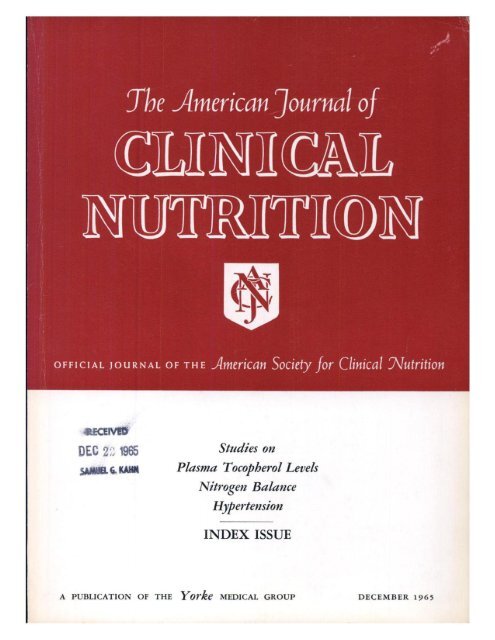The effect of an intervention to reduce aflatoxin consumption from 6 to 18 mo of age on length-for-age z-scores in rural Tanzania: a cluster-randomized trial
IF 6.5
1区 医学
Q1 NUTRITION & DIETETICS
引用次数: 0
Abstract
Background
Linear growth faltering continues to negatively affect children in low- and middle-income countries and is associated with poor cognitive, developmental, and educational outcomes. Laboratory and observational data suggest that aflatoxin (AF) is a contributor to stunting.
Objective
The Mycotoxin Mitigation Trial was a cluster-randomized, community-based 2-group trial conducted in Kongwa District, Tanzania, between 2018 and 2020. The trial assessed whether a 12-mo intervention to reduce AF consumption increased length-for-age z-scores (LAZ) at 18 mo.
Methods
Low-AF maize and groundnut flours were provided to the intervention group each month; skin lotion was distributed to the control group monthly. Infant and young child feeding education was delivered equally in 52 health facilities (clusters). Anthropometry and the AF blood biomarker serum AF-albumin (AF-alb) were assessed at 6, 12, and 18 mo of age. Outcomes were analyzed as intention-to-treat and per-protocol using linear mixed-effects models.
Results
Two thousand eight hundred forty-two maternal–infant dyads were recruited into the study. The intervention did not create a contrast in AF-alb. At 18 mo, 36% (n = 186/520) of infants had detectable levels of AF-alb compared with 54% (n = 195/364) at baseline, with no difference between groups. Mean LAZ in the intervention group at 18 mo was −1.83 (n = 1231, 95% CI: −1.93, −1.73) compared to −1.90 (n = 1287, 95% CI: −1.99, −1.82) in the control group (P = 0.28).
Conclusions
An intervention to reduce AF exposure did not alter AF-alb nor anthropometric measures between treatment groups. Drought and agricultural data indicated less favorable conditions for toxin production, resulting in low levels of exposure in both trial arms. Annual, seasonal, and geographic heterogeneity of AF contamination make it difficult to study in an ethically designed trial. Our formative research and early trial data indicate that stunting and intermittent AF exposure continue to be a problem in this region. However, the low-AF exposure levels during the trial led to inconclusive results.
Trial Registration number
NCT03940547 (ClinicalTrials.org)
干预减少黄曲霉毒素摄入量从6至18个月的年龄对长度年龄z得分的影响在坦桑尼亚农村:一项集群随机试验。
导读:在低收入和中等收入国家,线性增长停滞继续对儿童产生负面影响,并与认知、发展和教育成果不佳有关。实验室和观测数据表明,黄曲霉毒素(AF)是发育迟缓的一个因素。方法:真菌毒素缓解试验是2018年至2020年在坦桑尼亚Kongwa区进行的一项以社区为基础的集群随机两组试验。该试验评估了12个月的干预以减少AF消耗是否会增加18个月时的年龄长度Z评分(LAZ)。每月向干预组提供低af玉米粉和花生粉;对照组按月发放护肤液。52个保健设施(分组)平等地提供婴幼儿喂养教育。在6岁、12岁和18岁时进行人体测量和血液生物标志物(AF-alb)评估。使用线性混合效应模型对结果进行意向治疗和方案分析。结果:2842对母婴被纳入研究。干预未能成功地在AF-alb中形成对比。18岁时,36% (n=186/520)的婴儿可检测到af -白蛋白水平,而基线时为54% (n=195/364),组间无差异。干预组的平均LAZ为-1.83 (n=1,231, 95%CI: -1.93, -1.73),对照组的平均LAZ为-1.90 (n=1,287, 95%CI:-1.99, -1.82) (p=0.28)。讨论和结论:减少房颤暴露的干预措施并没有改变治疗组间房颤白蛋白和人体测量值。干旱和农业数据表明,毒素生产条件不太有利,导致两个试验组的接触水平都很低。房颤污染的年度、季节和地理异质性使其难以在符合伦理设计的试验中进行研究。我们的形成性研究和早期试验数据表明,发育迟缓和间歇性AF暴露仍然是该地区的一个问题。然而,试验期间的低AF暴露水平导致了不确定的结果。
本文章由计算机程序翻译,如有差异,请以英文原文为准。
求助全文
约1分钟内获得全文
求助全文
来源期刊
CiteScore
12.40
自引率
4.20%
发文量
332
审稿时长
38 days
期刊介绍:
American Journal of Clinical Nutrition is recognized as the most highly rated peer-reviewed, primary research journal in nutrition and dietetics.It focuses on publishing the latest research on various topics in nutrition, including but not limited to obesity, vitamins and minerals, nutrition and disease, and energy metabolism.
Purpose:
The purpose of AJCN is to:
Publish original research studies relevant to human and clinical nutrition.
Consider well-controlled clinical studies describing scientific mechanisms, efficacy, and safety of dietary interventions in the context of disease prevention or health benefits.
Encourage public health and epidemiologic studies relevant to human nutrition.
Promote innovative investigations of nutritional questions employing epigenetic, genomic, proteomic, and metabolomic approaches.
Include solicited editorials, book reviews, solicited or unsolicited review articles, invited controversy position papers, and letters to the Editor related to prior AJCN articles.
Peer Review Process:
All submitted material with scientific content undergoes peer review by the Editors or their designees before acceptance for publication.

 求助内容:
求助内容: 应助结果提醒方式:
应助结果提醒方式:


